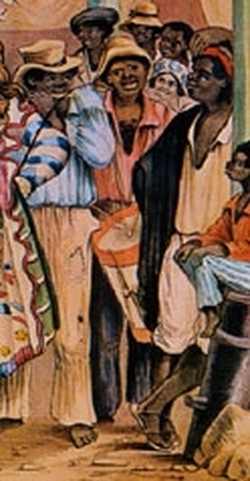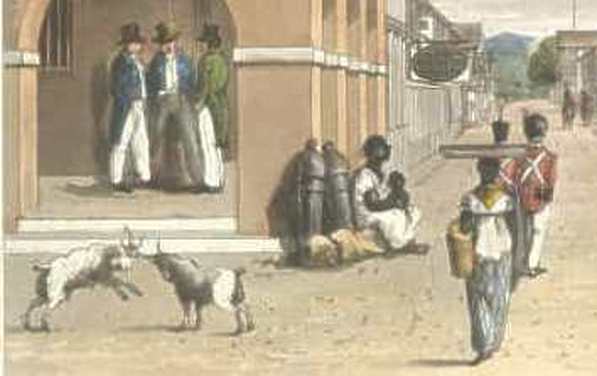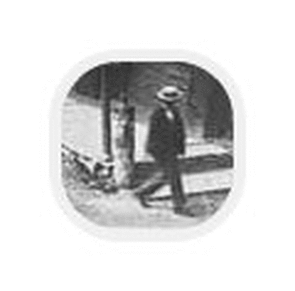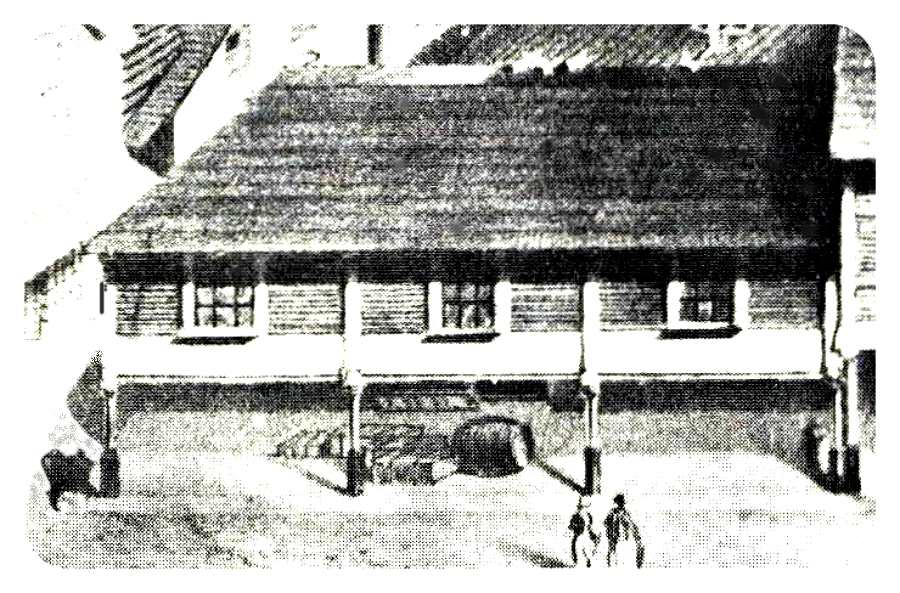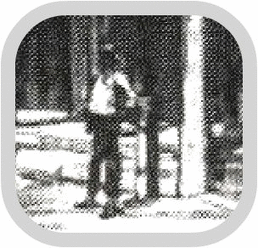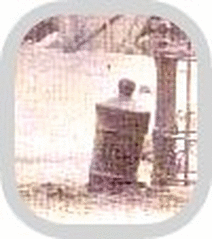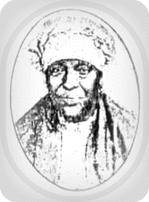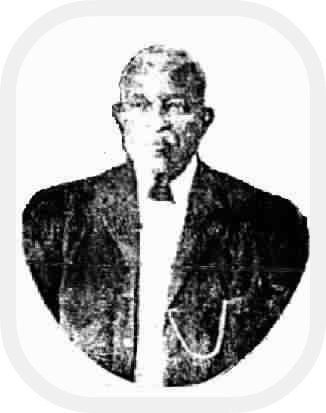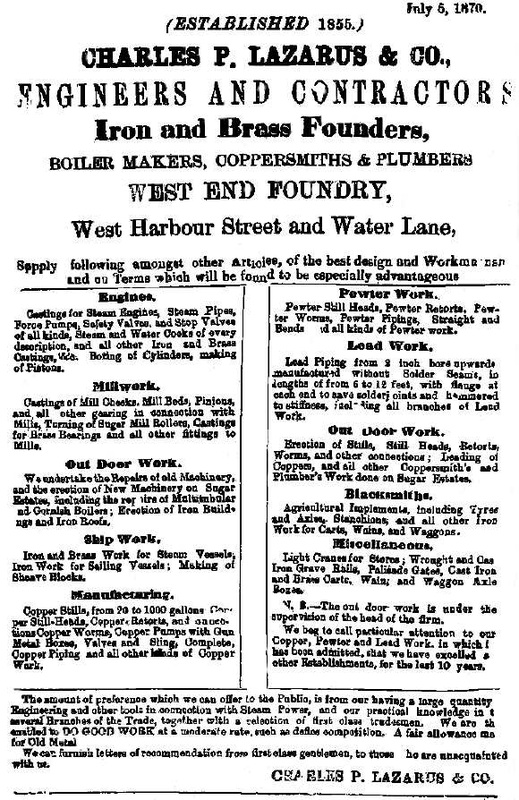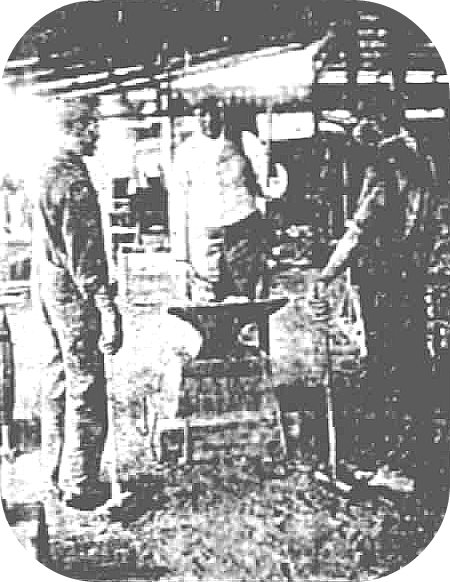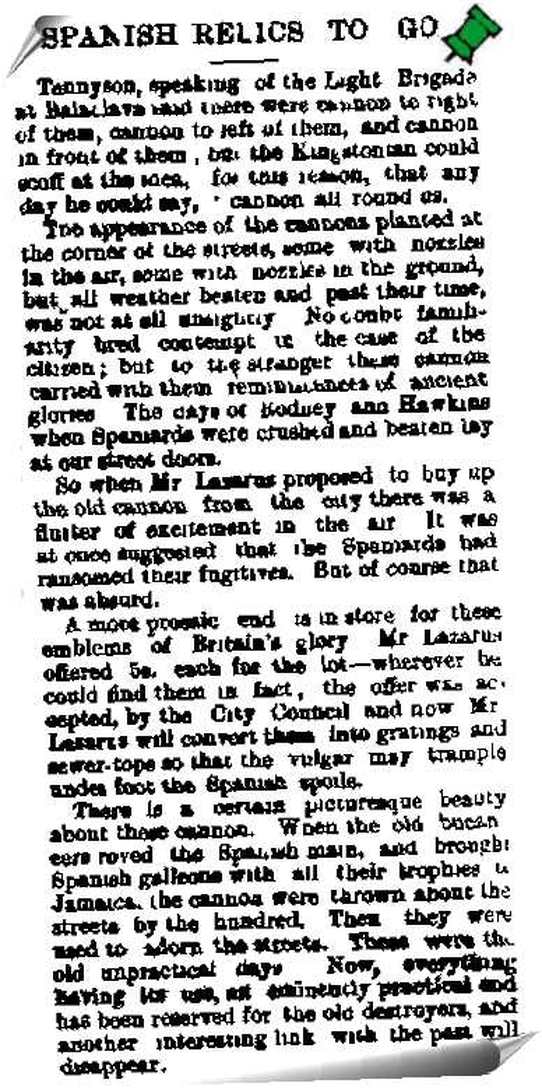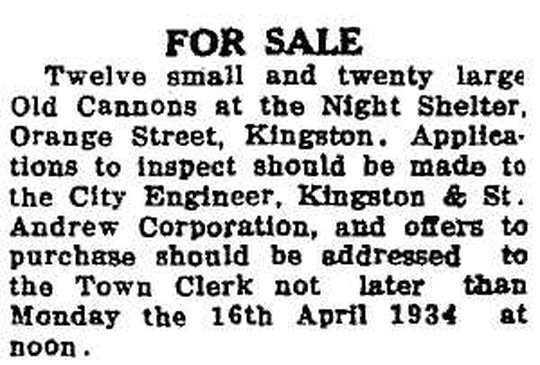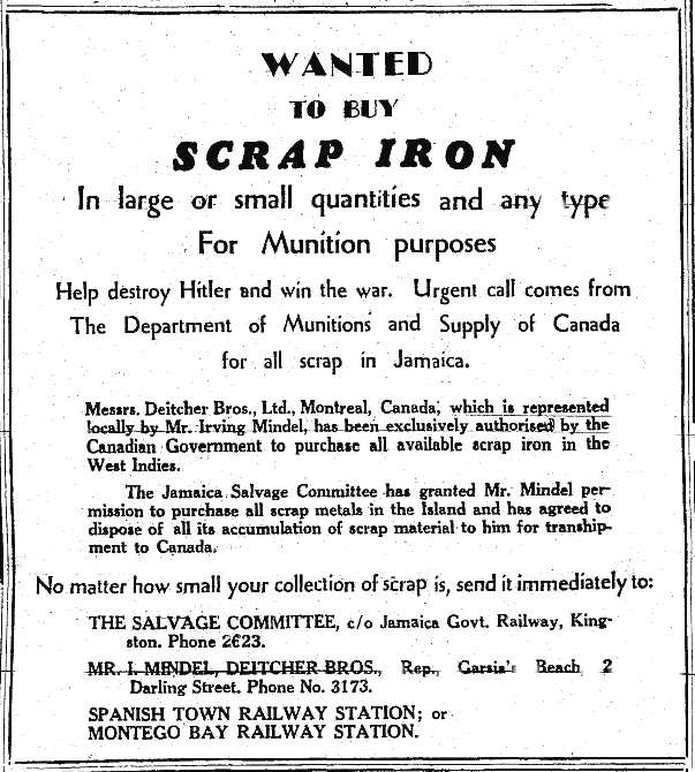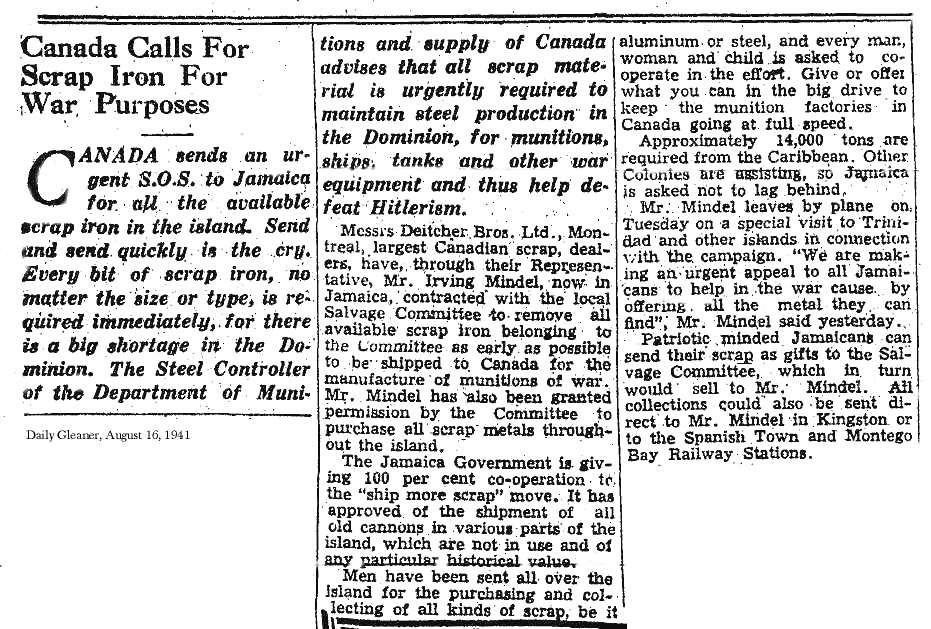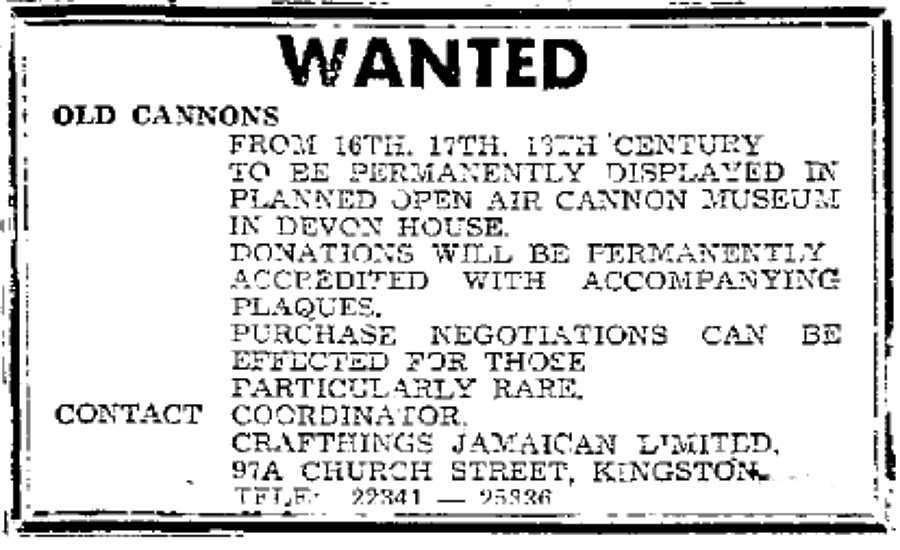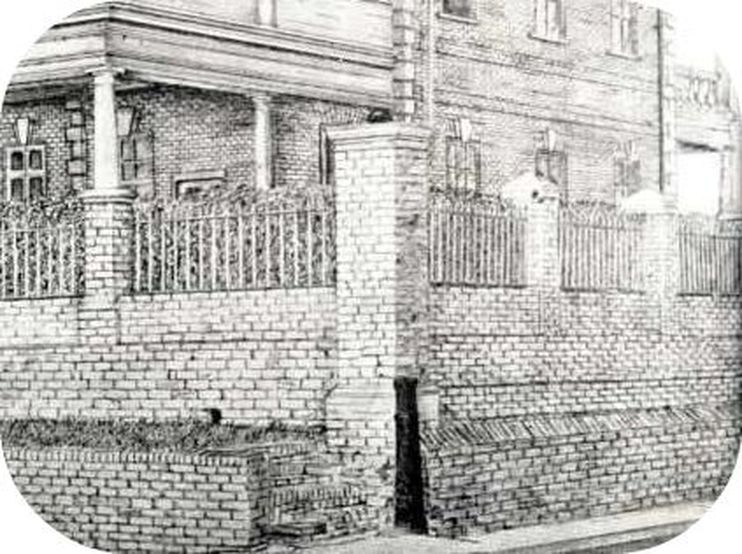Street Corner Cannons
|
Daily Gleaner, July 11, 1895 The real meaning and value of the survivals of a former age never seem to dawn upon us - perhaps owing to the lack of that imaginative faculty which we have recently been told has never been developed in the Jamaica character. This statement, indeed, finds apposite exemplification in the attitude of the community towards the memorials of the past in our midst. Take the commonest illustration we can find. At every street corner in Kingston are cannon plunged into the earth or lying on their side - excellent pillars and still more excellent lounging places for the idle. As a rule these awaken no memories in the mind of the citizens; they have no more distinction to them than would blocks of wood or pieces of basalt. But perhaps in this respect we are little better than most communities.
|
A visitor to Kingston in 1895 wrote:
The great peculiarity about Kingston is its sameness. In any large town, for instance, a stranger can identify his whereabouts by a steeple, or a terrace, or a clock, or a garden: in Kingston a stranger might identify fifty signs without reaching his residence. And to the untutored one it seems extraordinary that several of the principal streets should be utterly without designation: in other words that no name should posted up on the houses, denoting the name of the street at every crossing. The first two days I spent in Kingston were marked by the rather annoying feeling I experienced on entering strange houses by mistake; eventually I learned to reach home by comparing the cannons at the corners of the streets.
|
Daily Gleaner, November 2, 1895
[visitor’s account] The streets of Kingston are broad, and in the principal thoroughfares permanent shades projecting from the buildings protect the traveller from the sun. At every corner cannon are standing up with their nozzles in the ground, a relic of the bygone days when Britain upheld her renown on the sea by the auf of Drake and Rodney. |
Daily Gleaner, February 22, 1898 [editorial on Stark’s The Gem of the Antilles]
But the stranger, with the sharp shrewd eyes of inquisitiveness is at once struck with the quaint sights of Jamaica and especially of Kingston. He views the cannon at the corner of the street with wonder; he watches the bargaining of peddlars, the nonchalance of the beggar, and the absolute disregard of the value of time. |
the cannons survived both fire and earthquake in the 19th, and early 20th centuries . . .
but at the end of the 1890s most of the cannons in down-town Kingston were removed -
|
Daily Gleaner, May 14, 1898
[Mayor and Council meeting] OLD CANNONS AND STONES.The Clerk read a letter from the Inspector of Streets, Lanes and Carts, stating that in many parts of the city, there are large stones and bricks which are dangerous and suggesting that the old cannons be sold. Minutes from the Health Officer and the City Surveyor were also read on the subject. In connection with this matter, a letter was read from Mr C Lazarus, offering to purchase some of the cannons. The Board decided to advertise the cannons for sale, and the City Surveyor was directed to do his best in collecting the stones. |
Daily Gleaner, May 19, 1898
Office of the Mayor and Council, Kingston, 18th May, 1898, SEALED Tenders will be received at this Office up to Wednesday the 1st day of June 1898, from persons willing to purchase and remove the old cast iron cannons from the corner of Streets and Lanes which have been dug out owing to the reconstructions of the streets. The Mayor and Council do not bind themselves to accept the highest or any Tender. Tender to be marked on cover "Tender for purchase of old cannons" By order, O. THOMPSON, Clerk |
Daily Gleaner, May 21, 1898
The Mayor and Council invite tenders up to the 1st prox. for the purchase and removal of the old cannons in the streets, and lanes, which have been dug out. Daily Gleaner, March 30, 1899
CONTRACT WITH C. P. LAZARUS FOR PURCHASE OF OLD CANNONS. The Clerk read a letter dated 18th March, 1899, from the Colonial Secretary approving this contract. |
He left school at 13 and had to begin work at once. He was indentured to learn the trade of a plumber in December 1849. At nineteen he started his own business, establishing his famous foundry in West Kingston in 1855. For over 60 years, that foundry was constantly employed in important work, especially for the sugar states, and through it passed more than one thousand young men whom he trained.
In 1870, when the ocean telegraph cable was being laid, Lazarus assisted with the work and was recognised for the high quality of his work. The following year he cast a monster water-wheel for Savoy Estate in Clarendon. The Governor, Sir John Peter Grant, was among those who paid a special visit to the Foundry when the great wheel was completed to see it before it was dispatched to its destination. Another Kingston building he constructed was the synagogue on Duke Street in 1888 (the present building is that reconstructed after the 1907 earthquake.)
And it was Charles Philip Lazarus who built George Stiebel’s famous Devon House.
In 1870, when the ocean telegraph cable was being laid, Lazarus assisted with the work and was recognised for the high quality of his work. The following year he cast a monster water-wheel for Savoy Estate in Clarendon. The Governor, Sir John Peter Grant, was among those who paid a special visit to the Foundry when the great wheel was completed to see it before it was dispatched to its destination. Another Kingston building he constructed was the synagogue on Duke Street in 1888 (the present building is that reconstructed after the 1907 earthquake.)
And it was Charles Philip Lazarus who built George Stiebel’s famous Devon House.
Daily Gleaner, June 10, 1898
. . . and in the 20th century
The cannons still greeted visitors . . .
Daily Gleaner, January 23, 1914 [the arrival Princess Marie Louise]
On arrival at the wharf, the guard was drawn up in double file along the main drive-way facing the sea. The entire section from the gate to the wharf house was decorated with flags and buntings, artistically strung over head on the fencing and around the old cannons planted in the earth.
. . . and the city authorities were still trying to dispose of the old cannons
The cannons still greeted visitors . . .
Daily Gleaner, January 23, 1914 [the arrival Princess Marie Louise]
On arrival at the wharf, the guard was drawn up in double file along the main drive-way facing the sea. The entire section from the gate to the wharf house was decorated with flags and buntings, artistically strung over head on the fencing and around the old cannons planted in the earth.
. . . and the city authorities were still trying to dispose of the old cannons
. . . but then the Second World War, starting in 1939, provided an excellent and patriotic excuse for disposing of most of the remaining cannons, not only from Kingston, but from other parts of the island as well . . .
|
Daily Gleaner, March 20, 1940
(From Our Correspondent.) PORT ANTONIO, March 19.- An action at law might, it is said, result from the unauthorised removal of four old cannons which graced a property in this parish. The cannons are reported to have been shipped to England as scrap iron. The police and the Public Works Department are taking statements in the matter. Daily Gleaner, September 14, 1940
"The Mother Country is doing all for the world today, writes Mr John Lynch of Rhoehampton. Anchovy P.O., and here we are in a position to do something in return for the great (protection we are getting. England wants all the scrap iron she can get, and these two towns (Lucea and Montego Bay) have in the old forts at least 8 cannons, Falmouth has about 4 or 5, and in many of the streets in these towns there are cannons planted at the corners. In Montego Bay there are at least one dozen of them, and no doubt just as many in Falmouth and Lucea, and I feel certain there are a great many more throughout the island. "If I am not greatly mistaken there are quite a few German guns in Jamaica, sent out after the last war. "Some time ago I saw reference made to all the above, and calling the P.W.D. who are supposed to be collecting scrap iron. For God's sake try and get some one to get a move on, I think you are the only one who can." |
Daily Gleaner, August 16, 1941
Daily Gleaner, August 16, 1941
. . . but perhaps there had been rather too much enthusiasm for disposing of old cannons:
|
Daily Gleaner, June 12, 1952
Safety Islands for Pedestrians THE EDITOR, Sir: - I notice that the Safety Islands for pedestrians on King Street are being damaged, apparently by vehicles barging into them. If the KSAC would be interested in four old cannons for placing two at either end, I would be willing to donate same in a good cause. I think the vehicle would come off second best in the encounter. In the event of your receiving any applications, you are at liberty to disclose my identity. I am, etc.. "VENABLES" Kingston June 8, 1952. |
and then in 1967 . . .
Daily Gleaner, July 31, 1967
Daily Gleaner, July 31, 1967
- but I don't think I have ever seen a Cannon Museum at Devon House, so may be there were no cannons left to display.
. . . . on the corner in front of Hibbert/Headquarters House
|
This cannon must have been removed comparatively recently, because I know someone who remembers seeing it there.
|
However there are still some cannons on street corners in Kingston - I know because I saw two of them a short while ago - and I am organising younger members of my family to go on an expedition to locate and photograph any we can find.
